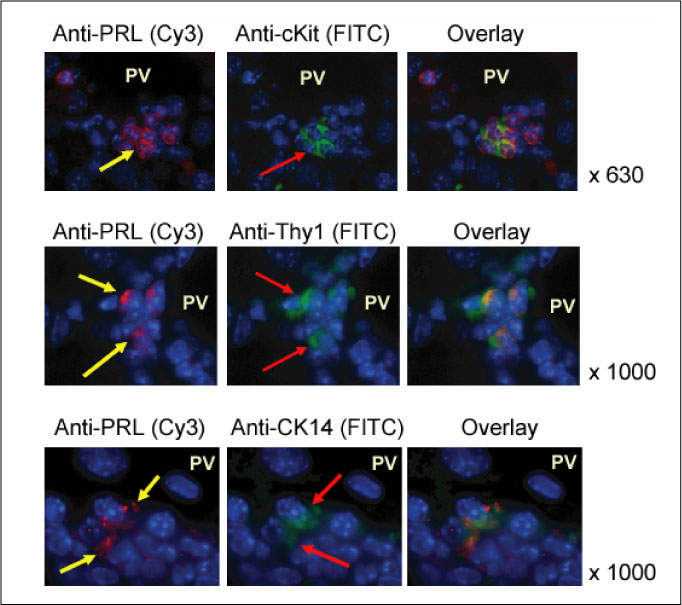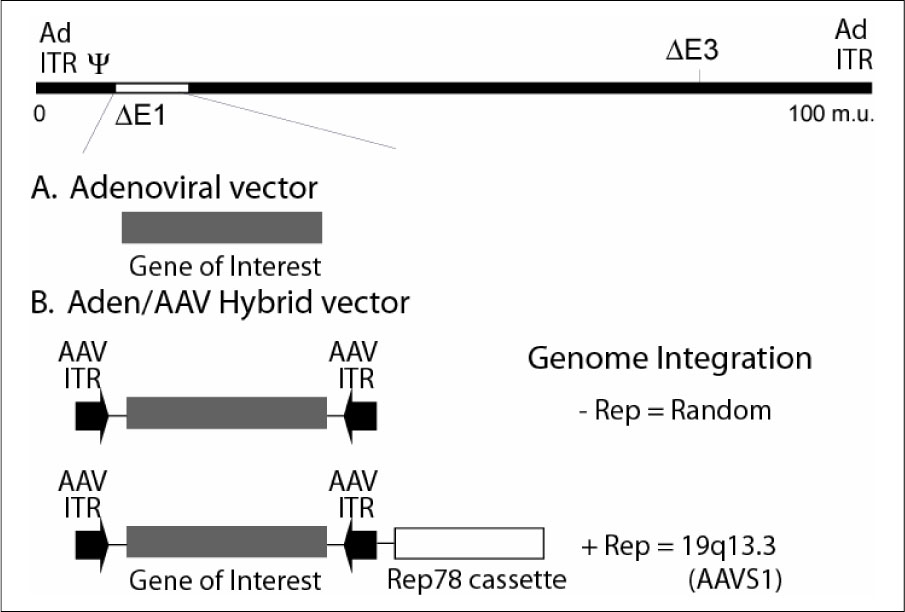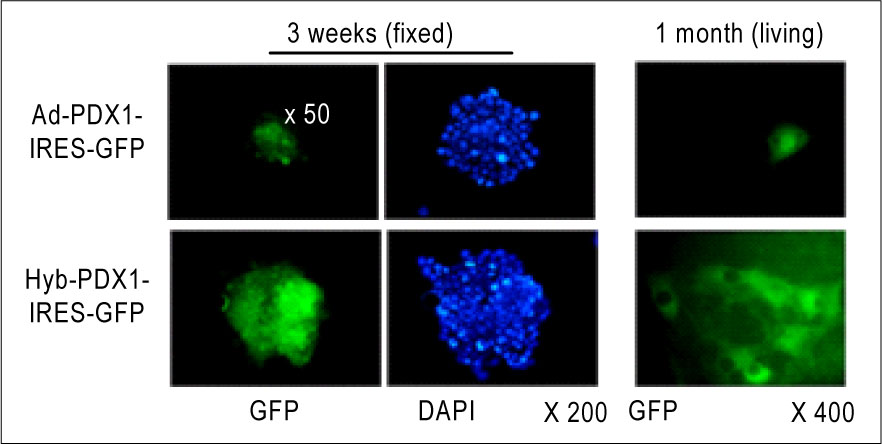J Korean Soc Endocrinol.
2005 Aug;20(4):301-305. 10.3803/jkes.2005.20.4.301.
Endocrine Regeneration Therapy using Adenoviral vector
- Affiliations
-
- 1Endocrinology, Metabolism & Molecular Medicine Northwestern University, Feinberg School of Medicine 303 East Superior Street, USA.
- KMID: 2100460
- DOI: http://doi.org/10.3803/jkes.2005.20.4.301
Abstract
- No Abstract available.
MeSH Terms
Figure
Reference
-
1. Yamaoka T. Regeneration therapy of pancreatic beta cells: towards a cure for diabetes? Biochem Biophys Res Commun. 2002. 296:1039–1043.2. Matsumoto T, Yamaguchi M, Kuzume M, Matsumiya A, Kumada K. Insulin gene transfer with adenovirus vector via the spleen safely and effectively improves posthepatectomized conditions in diabetic rats. J Surg Res. 2003. 110:228–234.3. Lee HC, Kim SJ, Kim KS, Shin HC, Yoon JW. Remission in models of type 1 diabetes by gene therapy using a single-chain insulin analogue. Nature. 2000. 408:483–488.4. Ferber S, Halkin A, Cohen H, Ber I, Einav Y, Goldberg I, Barshack I, Seijffers R, Kopolovic J, Kaiser N, Karasik A. Pancreatic and duodenal homeobox gene 1 induces expression of insulin genes in liver and ameliorates streptozotocin-induced hyperglycemia. Nat Med. 2000. 6:568–572.5. Kojima H, Fujimiya M, Matsumura K, Younan P, Imaeda H, Maeda M, Chan L. NeuroD-betacellulin gene therapy induces islet neogenesis in the liver and reverses diabetes in mice. Nat Med. 2003. 9:596–603.6. Zhang Y, Bai XF, Huang CX. Hepatic stem cells: existence and origin. World J Gastroenterol. 2003. 9:201–204.7. Falkowski O, An HJ, Ianus IA, Chiriboga L, Yee H, West AB, Theise ND. Regeneration of hepatocyte 'buds' in cirrhosis from intrabiliary stem cells. J Hepatol. 2003. 39:357–364.8. Lee EJ, Russell T, Hurley L, Jameson JL. Pit-1 induces transient differentiation of adult hepatic stem cells into prolactin-producing cells in vivo. Mol Endocrinol. 2005. 19:964–971.9. Zajicek G, Ariel I, Arber N. The streaming liver. III. Littoral cells accompany the streaming hepatocyte. Liver. 1988. 8:213–218.10. Arber N, Zajicek G, Ariel I. The streaming liver. II. Hepatocyte life history. Liver. 1988. 8:80–87.11. Drolet DW, Scully KM, Simmons DM, Wegner M, Chu KT, Swanson LW, Rosenfeld MG. TEF, a transcription factor expressed specifically in the anterior pituitary during embryogenesis, defines a new class of leucine zipper proteins. Genes Dev. 1991. 5:1739–1753.12. Godfrey P, Rahal JO, Beamer WG, Copeland NG, Jenkins NA, Mayo KE. GHRH receptor of little mice contains a missense mutation in the extracellular domain that disrupts receptor function. Nat Genet. 1993. 4:227–232.13. Glick E, Leshkowitz D, Walker MD. Transcription factor BETA2 acts cooperatively with E2A and PDX1 to activate the insulin gene promoter. J Biol Chem. 2000. 275:2199–2204.14. Aramata S, Han SI, Yasuda K, Kataoka K. Synergistic activation of the insulin gene promoter by the beta-cell enriched transcription factors MafA, Beta2, and Pdx1. Biochim Biophys Acta. 2005. 1730:41–46.15. Kaneto H, Nakatani Y, Miyatsuka T, Matsuoka TA, Matsuhisa M, Hori M, Yamasaki Y. PDX-1/VP16 fusion protein, together with NeuroD or Ngn3, markedly induces insulin gene transcription and ameliorates glucose tolerance. Diabetes. 2005. 54:1009–1022.16. Schiedner G, Morral N, Parks RJ, Wu Y, Koopmans SC, Langston C, Graham FL, Beaudet AL, Kochanek S. Genomic DNA transfer with a high-capacity adenovirus vector results in improved in vivo gene expr ession and decreased toxicity. Nat Genet. 1998. 18:180–183.17. Surosky RT, Urabe M, Godwin SG, McQuiston SA, Kurtzman GJ, Ozawa K, Natsoulis G. Adeno-associated virus Rep proteins target DNA sequences to a unique locus in the human genome. J Virol. 1997. 71:7951–7959.18. Sun BD, Chen YT, Bird A, Amalfitano A, Koeberl DD. Long-term correction of glycogen storage disease type II with a hybrid Ad-AAV vector. Mol Ther. 2003. 7:193–201.19. Samulski RJ, Sally M, Muzyczka N. Friedmann T, editor. Adeno-associate viral vectors. In The development of human gene therapy. 1999. Cold Spring harbor: Cold Spring Harbor Laboratory Press;131–171.20. Buning H, Nicklin SA, Perabo L, Hallek M, Baker AH. AAV-based gene transfer. Curr Opin Mol Ther. 2003. 5:367–375.21. Carter PJ, Samulski RJ. Adeno-associated viral vectors as gene delivery vehicles. Int J Mol Med. 2000. 6:17–27.22. Samulski RJ, Zhu X, Xiao X, Brook JD, Housman DE, Epstein N, Hunter LA. Targeted integration of adeno-associated virus (AAV) into human chromosome 19. Embo J. 1991. 10:3941–3950.23. Recchia A, Parks RJ, Lamartina S, Toniatti C, Pieroni L, Palombo F, Ciliberto G, Graham FL, Cortese R, La Monica N, Colloca S. Site-specific integration mediated by a hybrid adenovirus/adeno-associated virus vector. Proc Natl Acad Sci U S A. 1999. 96:2615–2620.24. Lieber A, Steinwaerder DS, Carlson CA, Kay MA. Integrating adenovirus-adeno-associated virus hybrid vectors devoid of all viral genes. J Virol. 1999. 73:9314–9324.25. Douin V, Bornes S, Creancier L, Rochaix P, Favre G, Prats AC, Couderc B. Use and comparison of different internal ribosomal entry sites (IRES) in tricistronic retroviral vectors. BMC Biotechnol. 2004. 4:16.
- Full Text Links
- Actions
-
Cited
- CITED
-
- Close
- Share
- Similar articles
-
- Production and Quality Control of Adenoviral Vectors for Clinical Trials
- Adenoviral vector mediated in vivo gene transfer of BDNF promote functional recovery after facial nerve crush injury
- Role of gene therapy in treatment of cancer with craniofacial regeneration—current molecular strategies, future perspectives, and challenges: a narrative review
- Herpes Simplex virus thymidine kinase gene therapy delivered by retroviral or adenoviral vector in mouse model of lewis lung carcinoma
- Early nerve regeneration on the crushing injury model and the autogenous nerve graft model of rat sciatic nerve




